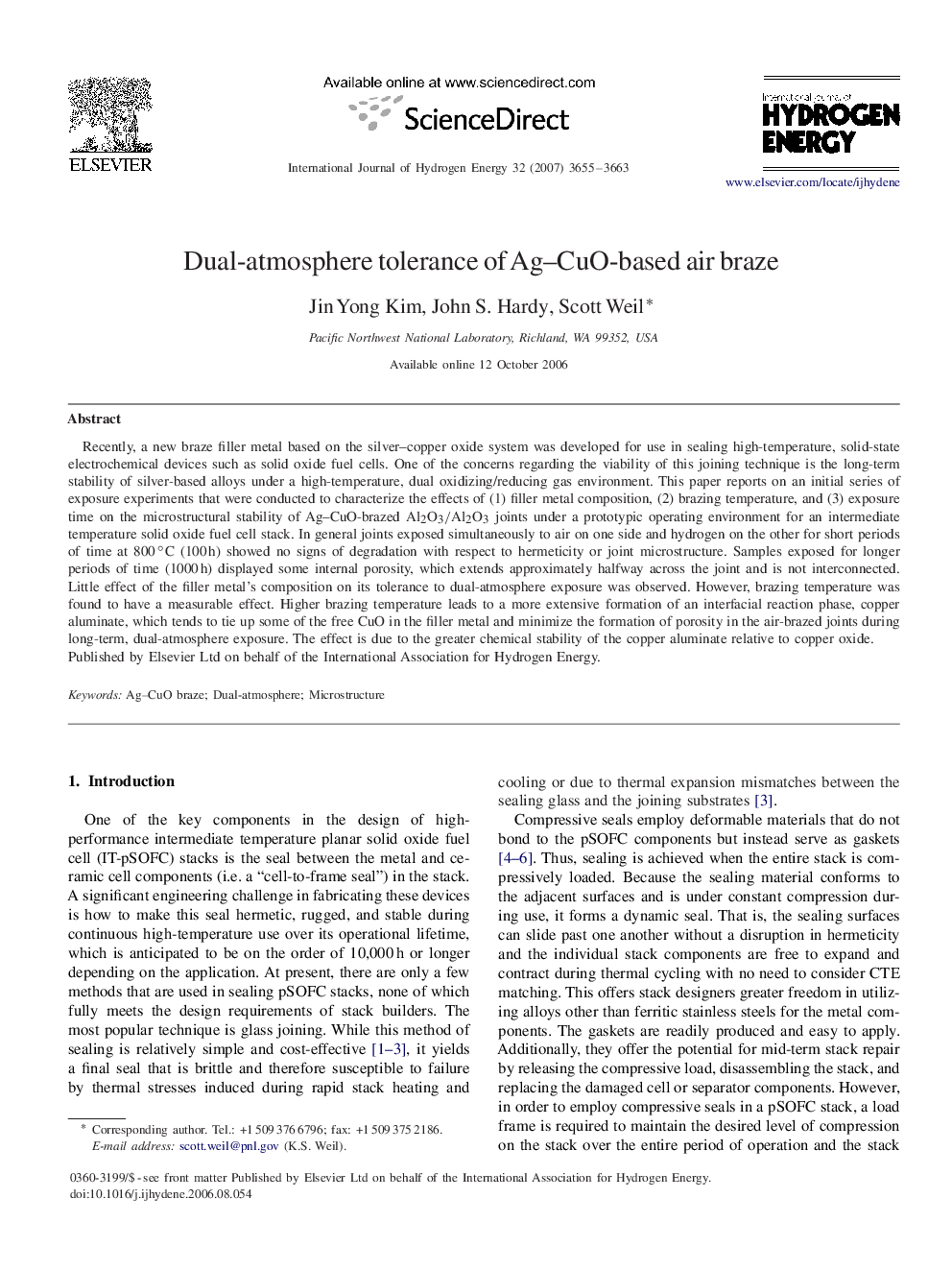| Article ID | Journal | Published Year | Pages | File Type |
|---|---|---|---|---|
| 1281900 | International Journal of Hydrogen Energy | 2007 | 9 Pages |
Recently, a new braze filler metal based on the silver–copper oxide system was developed for use in sealing high-temperature, solid-state electrochemical devices such as solid oxide fuel cells. One of the concerns regarding the viability of this joining technique is the long-term stability of silver-based alloys under a high-temperature, dual oxidizing/reducing gas environment. This paper reports on an initial series of exposure experiments that were conducted to characterize the effects of (1) filler metal composition, (2) brazing temperature, and (3) exposure time on the microstructural stability of Ag–CuO-brazed Al2O3/Al2O3Al2O3/Al2O3 joints under a prototypic operating environment for an intermediate temperature solid oxide fuel cell stack. In general joints exposed simultaneously to air on one side and hydrogen on the other for short periods of time at 800∘C (100 h) showed no signs of degradation with respect to hermeticity or joint microstructure. Samples exposed for longer periods of time (1000 h) displayed some internal porosity, which extends approximately halfway across the joint and is not interconnected. Little effect of the filler metal's composition on its tolerance to dual-atmosphere exposure was observed. However, brazing temperature was found to have a measurable effect. Higher brazing temperature leads to a more extensive formation of an interfacial reaction phase, copper aluminate, which tends to tie up some of the free CuO in the filler metal and minimize the formation of porosity in the air-brazed joints during long-term, dual-atmosphere exposure. The effect is due to the greater chemical stability of the copper aluminate relative to copper oxide.
